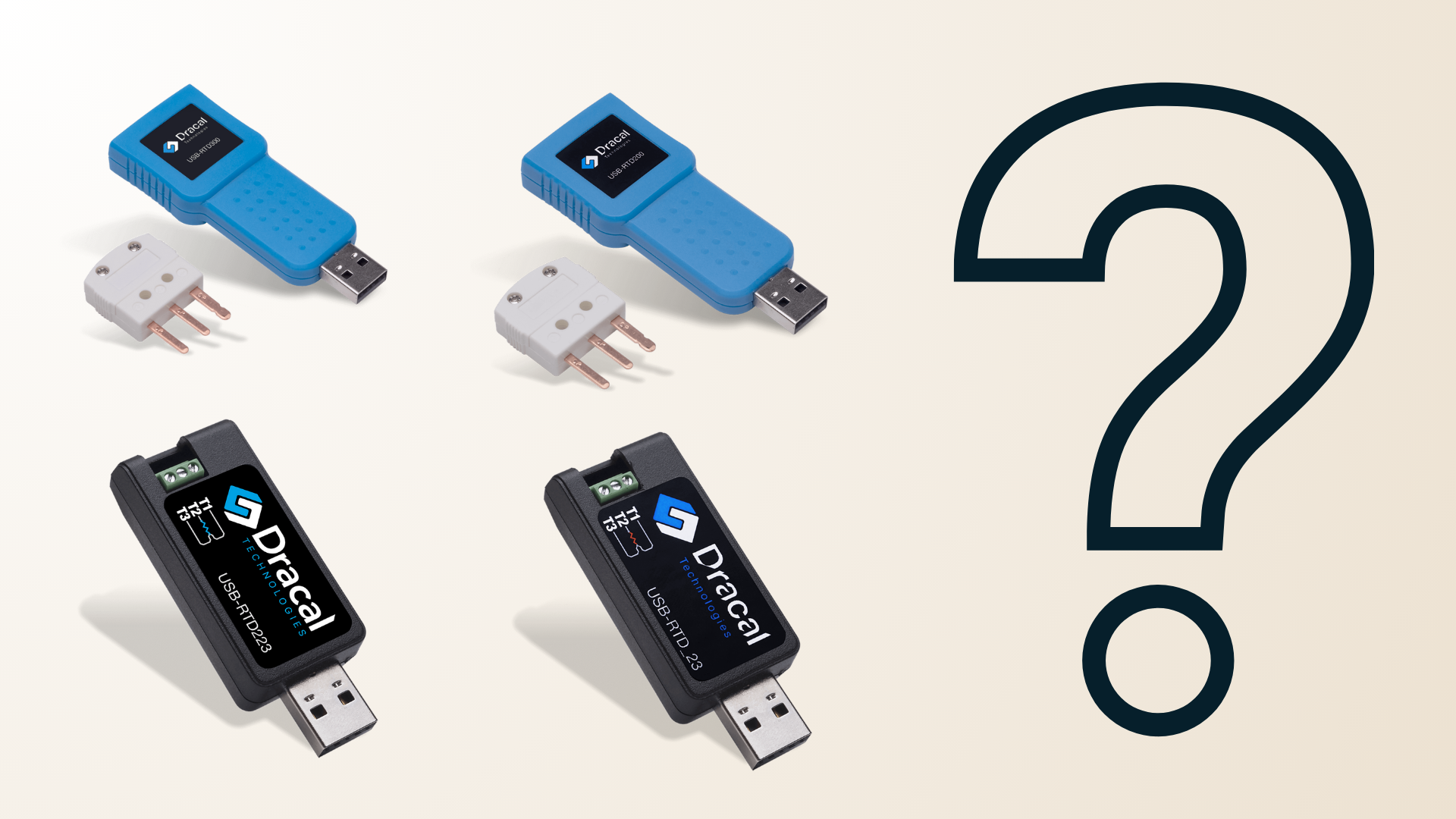10 Questions about USB Adapters for RTD Probes

This guide summarizes the answers to the most frequently asked questions about the RTD series, the USB adapters for probes of the same name.
- 1- Can the probes be submerged in water?
- 2- Can an RTD probe be used at temperatures beyond the announced operating temperature range of the housing (0°C to 50°C)? What precautions should I take?
- 3- Can I use any probe of my choice with your adapters?
- 4- How do I connect my RTD probe to the adapter?
- 5- Why did you choose to offer only one type of RTD probe?
- 6- What is the difference between RTD_23, RTD223, RTD200, and RTD300?
- 7- What calibration is performed on the instruments during production?
- 8- Is the individual calibration of the measuring instruments done at the Dracal factory?
- 9- Can I have a STEP/CAD file of the purchased RTD for its dimensions?
- 10- Is an external probe necessary for calibrating the adapter?
1- Can the probes be submerged in water?
Yes, RTD probes can be submerged in water, but USB adapters cannot.
2- Can an RTD probe be used at temperatures beyond the announced operating temperature range of the housing (0°C to 50°C)? What precautions should I take?
To measure temperature, only the probe should be placed in an environment hotter than 50°C. Additionally, the advertised accuracy for the adapters is optimal at 25°C.
3- Can I use any probe of my choice with your adapters?
Certainly! These are universal adapters for 2 or 3-wire RTD Pt100 1/3 DIN (Class AA) probes. 4-wire probes can also be used, but the increased accuracy of this type of probe compared to a 3-wire probe will be lost during connection.
4- How do I connect my RTD probe to the adapter?
A three-pin connector is provided with the adapter. You simply need to open it and connect the wires from your RTD probe. Then, insert the connector into the USB adapter, and you're good to go! The connector is also difficult to remove from the adapter, making the construction very robust.
5- Why did you choose to offer only one type of RTD probe?
There are numerous RTD Pt100 probes suitable for all possible temperature measurement scenarios. While we are not distributors of temperature probes, we wanted to provide a complete solution on our platform. Therefore, we selectively chose a probe that could meet the needs of the majority of our users.
6- What is the difference between RTD_23, RTD223, RTD200, and RTD300?
RTD_23 and RTD223 have the RTD Pt100 probe connected via a terminal block, whereas RTD200 and RTD300 connect the probe to the adapter using a connector.
RTD300 has a resolution of ±0.0005°C, while the resolution of the other three is ±0.02°C. We also offer a pre-wired probe optimized for use with RTD300 to achieve this resolution.
7- What calibration is performed on the instruments during production?
All RTD adapters are similarly calibrated in production. Using a precision probe at ambient temperature, the programming software calibrates the adapter to meet the specifications, such as ±0.001°C for the RTD300.
8- Is the individual calibration of the measuring instruments done at the Dracal factory
At the Dracal production factory, a pass/fail type of testing is conducted during the production of the measuring instrument. Additionally, the component manufacturer carries out individual calibration at their factory before being shipped to us. These calibrations are not ISO17025 certified, but if your industry does not require this standard, you can confidently use Dracal's USB adapters upon receiving them.
9- Can I have a STEP/CAD file of the purchased RTD for its dimensions?
We do not provide this type of file, but all the housing dimensions are indicated in the product datasheet. The cable length is also specified: 1 meter.
10- Is an external probe necessary for calibrating the adapter?
No, having a probe to calibrate the adapter is unnecessary. Without a probe, the laboratory will use an instrument that simulates the presence of a theoretical RTD probe. However, if possible, it is preferable to calibrate the device with the final probe to compensate for the probe's error in calibration and achieve better accuracy.